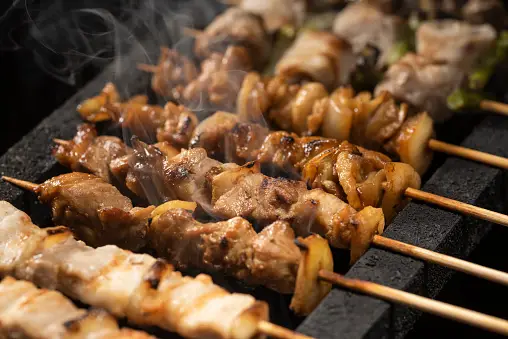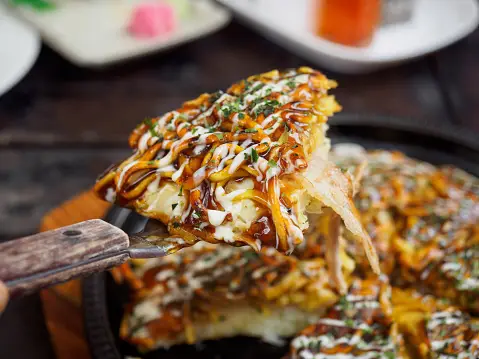10 Must-Try Traditional Japanese Dishes
Japan is verifiably nourishment paradise for those who adore eating. Shifted topography implies get to to new fish, poultry and ruddy meats, vegetation developed profound within the mountains. Rice and noodles are staples whereas konbu serves as a common base for broths.
Unmistakable seasons moreover welcome assorted nourishments to complement the climate; hot pot, udon, and ramen to warm the body, sushi and sashimi for summer delights. It is genuine that Japanese food caters to nearly each taste – but maybe, zest significant others. Notwithstanding, there are notorious nourishments that everybody ought to test. While it is barely conceivable to list each must-try since Japanese nourishment is fair so great, the taking after nine Japanese dishes are the culminate beginning point for your foodie experience when you’ll travel to Japan.
1. Ramen
You’ll discover that each locale specializes in its possess flavors, and family-run ramen slows down as a rule come with a twist.
Most shops offer customization; you'll be able select how thick and firm you need your noodles.
Whereas the normal fixings incorporate ocean growth, pork paunch, or fish, and a half-cooked egg, each eatery has its possess uncommon combination.
My individual favorite is the fish ramen!
2. Omurice
Brief for omelet rice, omurice is cheap gourmet for hungry college understudies.
What’s so uncommon almost rice and eggs? Well, take a liberal piling of jasmine rice wrapped in a lean, eggy cocoon and decorate with ketchup or curry for this Japanese claim to fame. Varieties can incorporate cheese or spinach or any finished filling.
More current elucidations of omurice presently serve a soft layer of mixed eggs over fricasseed rice.
I prescribe the cheese and sauce combo for a warm dinner that hits you right within the heart. It is astounding how something so basic can taste like paradise.
3. Yakitori
In case you’re set for a night of stomach adoring, yakitori will have you shelling out for plate after plate of barbecued chicken sticks.
The succulent smell of char-grilled meat will allure you indeed some time recently you set the into the Japanese eatery.
These delicate chicken-and-spring onion sticks taken a toll around 100-200 yen per adhere; it’s standard to arrange many at a time.
Other stick delights incorporate creature innards like chicken insides, crunchy heart and lungs, the delicate neck and fried chicken skin.
Enjoy within the profound sear and oil and wash it down with a cold glass of mango yogurt.
4. Nabe
A typical Japanese hot pot is made with a bubbly and hot mixture of konbu and soy sauce broth. In some areas, they use a creamier soy base instead.
Vegetables, like cabbage, tofu, and meat slices, are dipped and cooked. Noodles are also included to complete the meal. There are different types of nabe, such as sukiyaki and shabu-shabu. The main difference between them is the soup they use.
Nabe is a great choice when you want to entertain a group because it only requires one pot for serving. If you want to try something challenging, you should go to an all-you-can-eat nabe restaurant. They have a lot of different meats, pastes, noodles, and vegetables that are definitely worth the money.
5. Okonomiyaki
The conventional Osaka okonomiyaki is built from a player of flour, eggs, ground yam, dashi and destroyed cabbage shaped in shape of a flapjack; Lean meat cuts may be diced in as well; Upon coming to a browned, solid-state, thick sweet sauce is brushed on beat with it. A piling of bonito pieces and mayonnaise completes the dish.
Shockingly, it is the Hiroshima-style okonomiyaki that individuals come over most frequently.
Layering on best of each other could be a noodle base, followed by cabbage and bacon, at that point the initial okonomiyaki hitter and sauces.
Okonomiyaki eateries offer a run of filler fixings, so you’ll certainly discover something you like.
6. Sushi & Sashimi
Raw seafood characterizes Japanese cooking with its refreshingly cold nature.
Rice, new fish cut, and ocean growth wrapping characterize this nourishment choice. Alluded to as nigiri sushi, the crude angle over rice introduction is the foremost common kind.
Maki rolls are precisely what it sounds like, a roll of seaweed-wrapped rice with a assortment of fillings.
Solitary angle cuts are called sashimi, served new with going with pieces of cured ginger.
Involvement transport belt sushi for its fun introduction and budget costs. Costs are based on the color of the plates, depending on the sort of sushi, choice of ocean nourishment, etc.
There are moreover strength sushi eateries where the chef presents their freshest sell off of the day.
“Itadakimasu!”
7. Hitsumabushi
Grilled eel on fluffy rice tastes really good, but the traditional hitsumabushi dinner will make you love every bite.
Along with the regular grilled eel on rice, the meal also comes with miso soup, a clear broth, spring onions, and sometimes wasabi and sesame seeds to make it taste even better.
Split your eel rice bowl into four parts, then begin by eating the biggest section. Put the second part of your day in a bowl and pour the light soup in it. Eat it while it's warm. In the third part of the recipe, add spring onion and wasabi or seaweed based on what you like. You have the freedom to eat the remaining food in any way you like.
Don't worry about dinner right now. A plain meal of grilled eel on rice is just as delicious as fancy expensive food. Put a little of the tasty soy sauce on the food and let it dissolve in your mouth.
8. Tempura
Tempura is a yummy dish that is battered and fried until it becomes golden and crispy.
Tempura is a dish that is usually served with udon and soba noodles, but it can also be eaten as the main meal. The fried food is mostly made from seafood and vegetables like shrimp, eggplant, mushroom, pumpkin, sweet potato, and leaves.
To eat, just put it in the sauce. Some restaurants provide a little bowl of salt instead, which enhances the taste of the food.
Tempura is usually served in bento boxes and as a side dish. However, there are restaurants that focus solely on serving tempura.
9. Onigiri
Onigiri is a popular Japanese food that is more like a simple snack or quick meal rather than fancy gourmet food. It's definitely something you should give a try.
Onigiri is commonly found in convenience stores, although you can also find it in restaurants. They are very popular among office workers and students who want quick and easy food.
Budget-conscious people also like that it only costs a few hundred yen.
Don't be tricked by its simple shape and seaweed wrapping - it is very difficult to make the rice just right.
Traditionally, a common filling for this food is pickled Japanese plum called umeboshi. However, other popular choices include a mixture of tuna and mayonnaise, or even salmon.
Different types of rice have seasoning added to them, such as pickled plum, dried fish, and small amounts of egg. Some types of Onigiri are lightly grilled and flavored with soy sauce.
There are more Japanese foods to try, like snacks and desserts. This food mostly has seafood, vegetables, and rice. There are many choices available to pick from. In Japanese cooking, people have always focused on coming up with fresh ideas and being creative.
Here are some helpful tips for enjoying a delicious meal without any issues:
- Start your meals with the joyful expression "Itadakimasu. " Rewrite this text in simpler words: "
- Don't stick your chopsticks straight up in the rice because it's impolite and similar to a way people honor the dead.
- You don't have to give a tip. Some people might feel angry because they believe it is the job of the service industry to provide excellent service.
- You have to make noise when eating noodles to show that you enjoy them.
- Don't wipe your nose with a tissue at the table, go to the bathroom to use a tissue instead.
- Hold your bowl up to your mouth and eat without spilling any food.
- If there is an older person or someone with a higher position than you at the table, make sure to give them more tea or water when it runs out.
- Make sure to have some money with you because small shops may not accept credit or debit cards.
- For sure, pick restaurants owned by families because they use recipes passed down from generation to generation that are known to be really tasty.
- And make sure you learn some simple Japanese words and sentences so that it's easier for you to talk with the staff at restaurants.










0 Comments